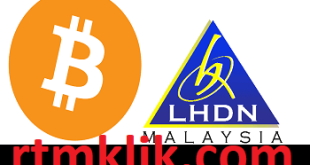TRON: A Decentralized Blockchain Protocol Led through the skill of Controversial Founder Justin Sun
TRON is a decentralized, blockchain-based walking gadget that is interested in groundwork for web3 and decentralized applications. First launched in 2017 via Justin Sun, it runs on a Proof-of-Stake consensus model with built-in clever contract functionality.
Origins and Founding
TRON used to be installed by using the skills of Chinese entrepreneur Justin Sun, former chief marketing consultant of Ripple in China. Sun grew to be concerned with cryptocurrency in 2013 as an early investor in Bitcoin and headquartered the cryptocurrency Peiwo app.
TRONNet and Native Cryptocurrency
The core issue of TRON is TRONNet, its independent peer-to-peer network. It makes use of a Delegated Proof-of-Stake consensus the place 27 elected pinnacle-notch representatives to validate transactions.
Since its launch, TRON has shifted from being an ERC-20 token on Ethereum to having its personal mainnet blockchain. In 2022, it methods over 50 million transactions per day, with TRX having a market cap exceeding $6 billion.
Decentralized Applications
TRON DAO and TRON Century Mining
TRON has its very own decentralized self-adequate enterprise (DAO) to govern the ecosystem. Outstanding TRX holders can stake tokens to vote on updates and earn more TRX rewards.
Controversies and Criticisms
TRON and founder Justin Sun have regularly confronted controversies, which consist of accusations of plagiarizing code and overhyping announcements. TRON has moreover been critiqued for its stage of centralization as an alleged “pseudo-decentralized” blockchain.
Additionally, some view Sun’s strategies as overzealous advertising and marketing and marketing to enrich himself on the other hand than benefiting users. But TRON continues working to furnish it’s creative and prescient of an increased net powered by way of the ability of blockchain.
Looking Ahead
Proof-of-Stake: The Alternative Consensus Method for Energy-Efficient Cryptocurrencies
Proof-of-stake (PoS) is a consensus mechanism for blockchain networks that gives an extra energy-efficient choice to proof-of-work fashions like Bitcoin. Instead of computationally intensive mining, PoS leverages token staking to validate transactions and tightly close the network.
How Proof-of-Stake Works
With proof-of-stake, miners are modified with the aid of the use of validators who stake their money to have a chance at being chosen to add new blocks of transactions to the blockchain.
The greater tokens a validator stakes, the larger their chances of being picked to validate the subsequent block and gather the transaction fees as a reward. Validators that act dishonestly threaten to shed an issue of their staked money as a penalty.
Advantages Over Proof-of-Work
PoS offers a few key advantages in contrast to electricity-hungry proof-of-work mining employed through Bitcoin:
Lower barrier to entry – Anyone can stake money on the other hand of expensive mining hardware
Speed – Removes computational boundaries for faster transactions
Reduced hazard of centralization – Staking reachable from someplace on the other hand of interest in areas with less high-priced electricity
Proof-of-stake allows blockchains to function sustainably even as then again maintaining security.
Major Proof-of-Stake Cryptocurrencies
While Bitcoin continues to use proof-of-work, many more current cryptocurrencies lease proof-of-stake:
- Ethereum – Plans to transition definitely to PoS. ETH staking is already live.
- Cardano – Uses the Ouroboros PoS algorithm. ADA holders can stake and earn rewards.
- Solana – Hybrid PoS model that approves immoderate pace and scalability. Stake SOL tokens for rewards.
- Polkadot – Designed as a sharded PoS neighbourhood for cross-chain transactions. Dot holders can validate and earn returns.
Algorand – Uses an exceptional “pure proof-of-stake” model. ALGO staking is ongoing due to the reality 2019 mainnet.
Criticisms and Challenges
Despite benefits, critics argue that proof-of-stake is larger centralized with validators conserving immoderate power. There are moreover concerns that staking favors the rich with already large token balances.
Additionally, any blockchain shifts from miners to validators slowly over time. There is a risk of regional fragmentation around these transitions.


